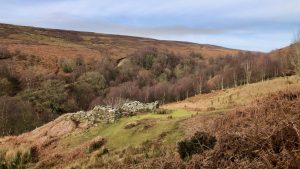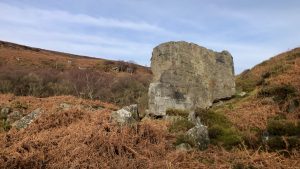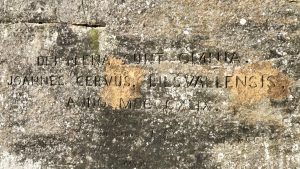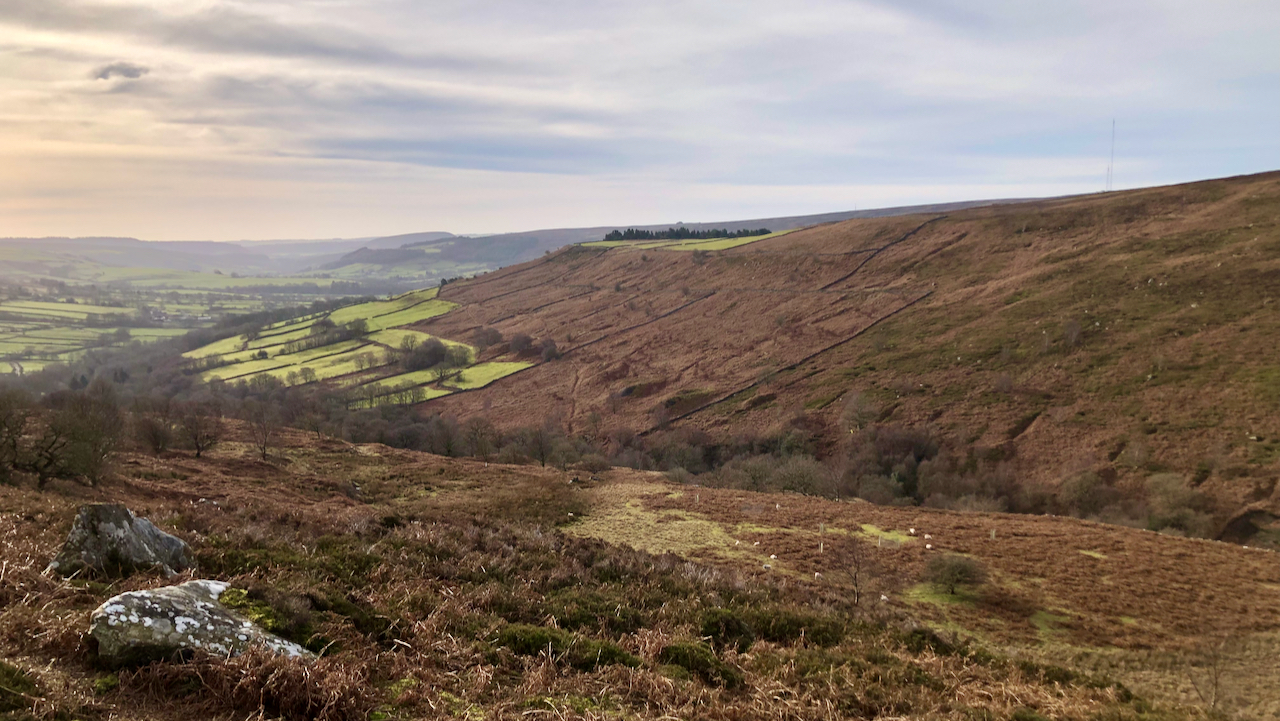Probably my most favourite place in the North York Moors.
Lower Tripsdale is characterised by livestock farming, with clear boundaries between enclosed fields, farm settlements and moorlands, accentuated by contrasting colours. Upper Tripsdale is wild and secluded.
But the secret little valley contains a wealth of history.
The best way to get into Tripsdale is from Chop Gate, climbing up through William Beck Farm on to the moor before picking up a ghastly landrover track down into the tree-lined gorge of Tripsdale Beck. The track climbs steeply up the other side, where it crosses alongside Hagg House Moor to Bransdale (‘hagg‘ means woods or coppice growing on heath or rough ground).
Very noticeable on the far slope of Tripsdale are abandoned jet mines, which were in use for most of the 19th century. Jet is petrified wood that has been mined for jewelry since prehistoric times. The miners would tunneled into the shale-bearing formation, stopping when it became unsafe and moving along the stratum.

Tom Scott Burns says, shortly after the crossing are the ruins of an old dwelling, where an old cobbler is said to have lived1Ref038 => Burns, Tom Scott. “The Walker’s Guide to the Cleveland Hills”. Page 83. 1993. Smith Settle. ISBN 1-85825-009-9.. Apparently, outside the old Fox and Hounds Inn in Seave Green, he would sell clogs, shoes and slippers to the congregation that came down from Urra Church on Sundays.

A little further down the valley — just below the cliff face of Kay Nest — is a massive boulder known locally as the “Ship Stone” (T’ Ship Steean) because of its resemblance to the prow of a sailing ship. Heavisides estimates its dimensions as 17 feet 6 inches high, 20 feet wide and 61 feet long, weighing 1,500 tons2Heavisides, M. “Rambles in Cleveland”. Page 72. First published 1901. M.T.D. Rigg (Publications) 1988. .

One side of the boulder bears an inscription in Latin, which translates as follows:
‘All things are full of the creator.
John Hart, a man of Bilsdale.
1849.’
I once read that John Hart later taught at Ingleby Greenhow before emigrating to America and dying in Hawaii where his grave has been lost under volcanic lava and ash.
At the confluence of Tripsdale Beck with Tarn Hole Beck is Hagg House, a building once reputed for manufacturing large quantities of illicit liquor.
In Tarn Hole Beck, there are also remains of old iron bloomeries, dating back to the 12th century, where small amounts of iron ore were smelted in stone furnaces. These are located where there was an adequate supply of wood near the charcoal and running water to air bellows.
It is also believed that there was once a glass furnace located at Hagg House, similar to the one excavated in Rosedale, which operated from 1580 to 1615.
- 1Ref038 => Burns, Tom Scott. “The Walker’s Guide to the Cleveland Hills”. Page 83. 1993. Smith Settle. ISBN 1-85825-009-9.
- 2Heavisides, M. “Rambles in Cleveland”. Page 72. First published 1901. M.T.D. Rigg (Publications) 1988.

Leave a Reply to marlies barlow Cancel reply